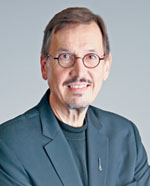Telehealth spurs big changes in care

The face of telehealth is changing in ways that are becoming unrecognizable from just a few short years ago. No longer is it just a rudimentary communication between healthcare providers and patients. It is now a substantive encounter that reflects the intimacy and personal nature of a face-to-face visit, providers of new-generation technology say.
As technological advancements focus on the integrity and dimension of quality patient care, it is giving rise to a new term that is being used more often in the field by people like Kevin Fickenscher, MD, chief medical officer of AMC Healthcare: Telecare.
“I describe us as being in the telecare business,” he said. “Telecare is much more proactive than telehealth.”
[See also: Telehealth takes off in rural areas.]
Though AMC is positioned as a remote monitoring organization, it is only a piece of what the company does, Fickenscher said.
“We are much more than a device monitoring company,” he said. “We have nurses who can virtually offer care, collect data and provide analytics.”
Telehealth – or telecare – has become a fairly crowded field, Fickenscher acknowledges, yet few are addressing the real issue of transforming the delivery of care.
“Most others are focused on the devices and technology,” he said. “I have felt for many years that it is all about the process and not the technology. We are focused on the process, which is what differentiates us.”
 One of the process issues that is in need of improvement, Fickenscher said, is the long gap between decisions made in the hospital and their application in the post-acute sector.
One of the process issues that is in need of improvement, Fickenscher said, is the long gap between decisions made in the hospital and their application in the post-acute sector.
“It gets thrown over the acute care wall, we get it anywhere between 24 and 96 hours later and that can be a long time,” he said. “What we intend to do is close the gap by looking at where the gaps occur in transition and solve those problems. We need to move upstream, become more engaged with clients in discharge planning and assess which services are most appropriate for those patients.”
[See also: Telehealth gives Miami docs global reach.]
Providers also need to look at diversifying the types of disorders that can be treated in the community setting and work toward providing solutions for them, Fickenscher said. Mental health issues, such as developmental disabilities in young people, need to be analyzed more intently so they can be better managed, he said.
The connectivity factor
Technology provides the platform, but that is just the machinery of telehealth, says Peter Antall, MD, medical director of Boston-based Online Care Group. Without a capable staff of professional caregivers, he says, the concept has no basis in reality.
So technology producer American Well is working closely with Online Care Group to provide a 24/7 virtual healthcare service, consisting of physicians, dieticians and therapists. Through this model, patients have a strong connectivity bond to the healthcare provider community, Antall said.
“From a continuity perspective, the best care is within the Medical Home, but we can provide after-hours care at a distance,” he said. “We can offer our wisdom and expertise. From a physician, the patient get vitals and diagnostics, but more importantly, expert consultation.”
Antall said he had an epiphany about telehealth possibilities about six or seven years ago when he observed his young daughter video chatting with her friends.
“It was all in real time and it felt like her friends were right there in the room,” he said. “I was blown away by how clear the video was and that my daughter did this by herself without any help. It occurred to me that we should do this in healthcare.”
As a practicing pediatrician, Antall says he has firsthand perspective on the at times disjointed relationship between clinicians and technology and that making technology easier to use should be a priority for any effective telehealth solution.
The key to effective interaction with patients, Antall says, is recreating a physical office visit as closely as possible. The Online Care Group methodology is designed to “mimic the steps in a brick and mortar practice,” he said, in which patients log in, have their visits captured and create a medical profile.
Patients with chronic conditions have long been candidates for telehealth, but through the more intimate encounters that are now being created, remote treatment of disease can now expand into other emotional and psychological areas, such as insomnia, depression and anxiety.
“We are developing protocols to address these issues, which are very amenable to telehealth,” Antall said.
 New business models
New business models
Telehealth is evolving as a commercial opportunity and is branching out in different directions, says Girish Navani, CEO of Westborough, Mass.-based eClinicalWorks.
“In the past five years, telehealth has been viewed as a separate capability in terms of provider and patient engagement, offered by payers as a way to communicate with physicians,” he said. “I see it progressing further in the next five years – as bundled payments come in and there are episodes of care, telehealth will become much more important.”
The need to make professional consultations less expensive and more efficient is creating two separate business models that Navani classifies as “B to C” (business to consumer) and “B to B” (business to business). The models are primarily defined by the sites of care, he said – for instance, B to C is the physician interacting with the patient at home, while B to B can be two business sites, such as the physician clinic and a work site.
Though it began as an electronic health record company, eClinicalWorks has sharpened its focus on telehealth in response to high consumer demand, Navani said.
“Consumers want it very much and we are positioned to offer it to them,” he said. “Going forward, we will concentrate on the B to C model and take it from there.”
[See also: Telehealth sees explosive growth.]
























